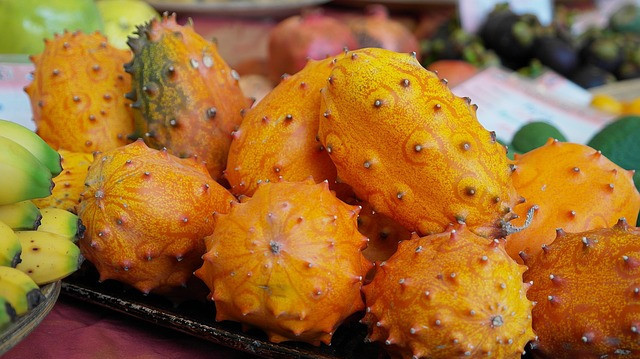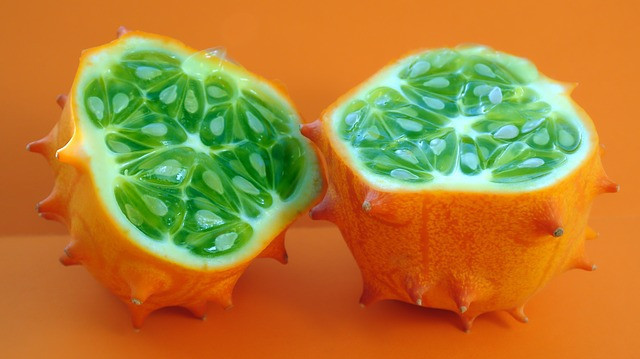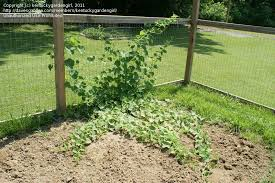
In our quest to prepare for whatever disaster might drive us from our homes and cities, we gather and store all sorts of store-bought foods and equipment to ensure our survival but, what about the abundant natural foods like the African Horned Cucumber (Kiwano)? In this article, I will show you How To Grow African Horned Cucumber (Kiwano) in A Drum and how to collect the seed for future crops.
I will also include some of the benefits and how to eat the fruit of the African Horned Cucumber, also known as Jelly Melon, Kiwano, Rooi-agurkie, Rooikomkommer (Afr.), Mokapana (Tswana).
What Is the African Horned Cucumber
The African Horned Melon, although a popular vine with white or yellow flowers and delicious fruit, is an invasive vine that grows very easily and it has caused damage to the natural habitat in New Zeeland and Australia, where it was introduced in the 1930s. It is also Also known as:
- Kiwano African horned cucumber
- Kiwano horned melon
- African horned melon
Where does the African Horned Cucumber come from
It originates from Southern Africa where it was used as a nutritional supplement in the diets of the Khoisan people living in the Kalahari Desert in Southern Africa. They were popular because the thick skin of the fruit keeps the moist flesh and seed intact. The fruit is 80% water and was one of the very scarce sources of hydration in the Kalahari summers.
Growing The African Horned Cucumber
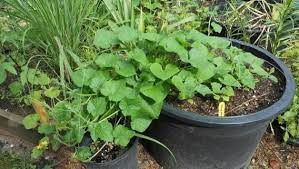
- Plant in spring, once night temperatures are above about 15 degrees C
- The Container For the best results, select a large container. A 200 ltr plastic drum cut in half makes a good container.
- The Soil African Horned Cucumbers prefers clay or loamy soil with a pH range of 6.0 to 6.5, though it is not terribly picky about soils. Choose an area near a trellis or fence to promote climbing. African horned cucumbers will grow in poor soils but may only produce one or two fruits, for maximum fruit harvest plant in rich, fertile soil.
- The Seed Ensure that you have good quality seed. Seed is not always readily available but with a bit of effort, they can be obtained. Best try the nurseries for good seed.
- Planting Plant the seed about 3 cm deep and 30cm apart. Remember, each vine can produce up to 100 fruit so don’t go wild planting too many.
- Gemination The seed should germinate in 7 to 10 days.
- Picking The fruit is ready for picking when the skin is a bright golden colour. It is not necessary to refrigerate the fruit.
Collecting the seed
Select a mature, plump, golden melon to collect your seed from. Cut the fruit in half lengthways, scrape out the seed and pulp into a jar. Now leave the fruit to “rot” for 7 days, opening the lid every day and stirring the seed. After 7 days, pour the contents of the jar into a small bucket or bowl and gently rinse the see under a tao, letting the viable seed sink to the bottom and the rest of the unwanted mess flow out of the bucket.
When you are left with just the clean seed at the bottom of the bucket, pour the water off and lay the seed on some clean paper towel or cloth and let it dry thoroughly. once dry, place them in a jar and close the lid until needed. Please make sure that they are properly dried or they will go mouldy.
5 Benefits of the African Horned Cucumber
1. Contains a Variety of Essential Nutrients
The African Horned Cucumber (Kiwano melon) has many vitamins and minerals which is the reason why it plays such an important role in its ability to positively affect our health.
A single African Horned Cucumber (209 grams) has the following nutrients (Ref):
- Calories: 92
- Carbs: 16 grams
- Protein: 3.7 grams
- Fat: 2.6 grams
- Vitamin C: 18% of the Reference Daily Intake (RDI)
- Vitamin A: 6% of the RDI
- Vitamin B6: 7% of the RDI
- Magnesium: 21% of the RDI
- Iron: 13% of the RDI
- Phosphorus: 8% of the RDI
- Zinc: 7% of the RDI
- Potassium: 5% of the RDI
- Calcium: 3% of the RDI
African Horned Cucumber is mostly water and relatively low in calories, carbs, and fat. About 16% of its calories come from protein — which is pretty high in relation to other fruits.
The African Horned Cucumbers’s unique nutrient distribution makes it suitable for a lot of diet plans.
2. Provides Several Potent Antioxidants
African Horned Cucumber, besides being extremely nutritious also provides a number of potent antioxidants of which many are very nutritious. Eating African Horned Cucumber can provide your body with sufficient antioxidants such as vitamin C, vitamin A, zinc, and lutein Which play an important role in reducing inflammation and preventing chronic diseases, such as diabetes, heart disease, and certain types of cancer Ref.
3. Promotes Healthy Red Blood Cell Production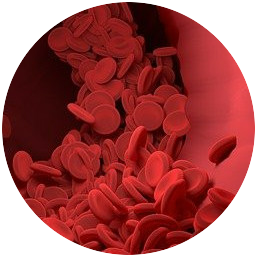
Haemoglobin is how your blood carries oxygen to your body and to do this it needs Iron. It just so happens that the African Horned Cucumber is rich in iron which helps your blood pump oxygen around your body. Although the African Horned Cucumber contains a form of the mineral known as non-heme iron which isn’t absorbed as efficiently as iron from animal sources, pairing non-heme iron with vitamin C enhances its absorption rate (Ref).
4. Promotes Blood Sugar Control
Because African Horned Cucumber has a low glycemic index, it doesn’t cause a significant spike in blood sugar after you eat it. It is also a rich source of magnesium — a mineral that’s directly involved in the metabolism of glucose (sugar) and insulin
5. Supports Proper Hydration
As most sportsmen and women know, water alone is not sufficient for proper hydration. Electrolytes like potassium, magnesium, and sodium are important for proper hydration. This is where the African Horned Cucumber, with its liquid, carbs and electrolytes plays an important role.
Munching on a cool African Horned Cucumber after strenuous work or play can keep you hydrated and fueled all day.
How to Eat African Horned Cucumber
When you look at the African Horned Cucumber it does not appear to be the most enticing fruit in the world but, you know…don’t judge a book…? Well, don’t judge this fruit by its skin! Once you get past the skin, this fruit is great, and healthy to boot. Eben the skin and leaves have been eaten(roasted first) by the Khoi.
The fruit tastes much like a cucumber but when very ripe it has a mild banana hint to its taste. the easiest way to eat the fruit is to cut it open and spoon the pulp straight to your mouth, pips and all. There are many pips and a lot of people just eat them with the pulp.
African Horned Cucumber can be eaten at any stage of development – young, mature green or ripe.
Don’t Forget
Remember that the African Horned Cucumber is a relatively fast-growing food source that could be grown year-round if the temp does not fall below 15 degrees C. It is one of many wild foods that we can find or grow if we need to in a SHTF scenario. Just make sure that you have the seed.

“It is better to have prepared and never to need it than to be unprepared and be in desperate need of it”.
Be Aware. Be Safe. Be Prepared!

